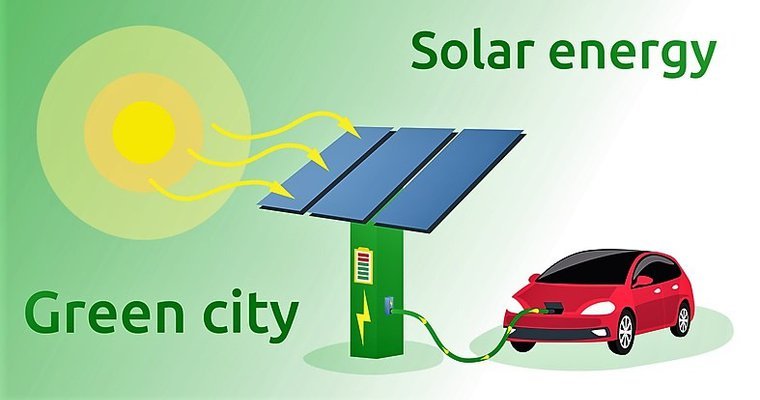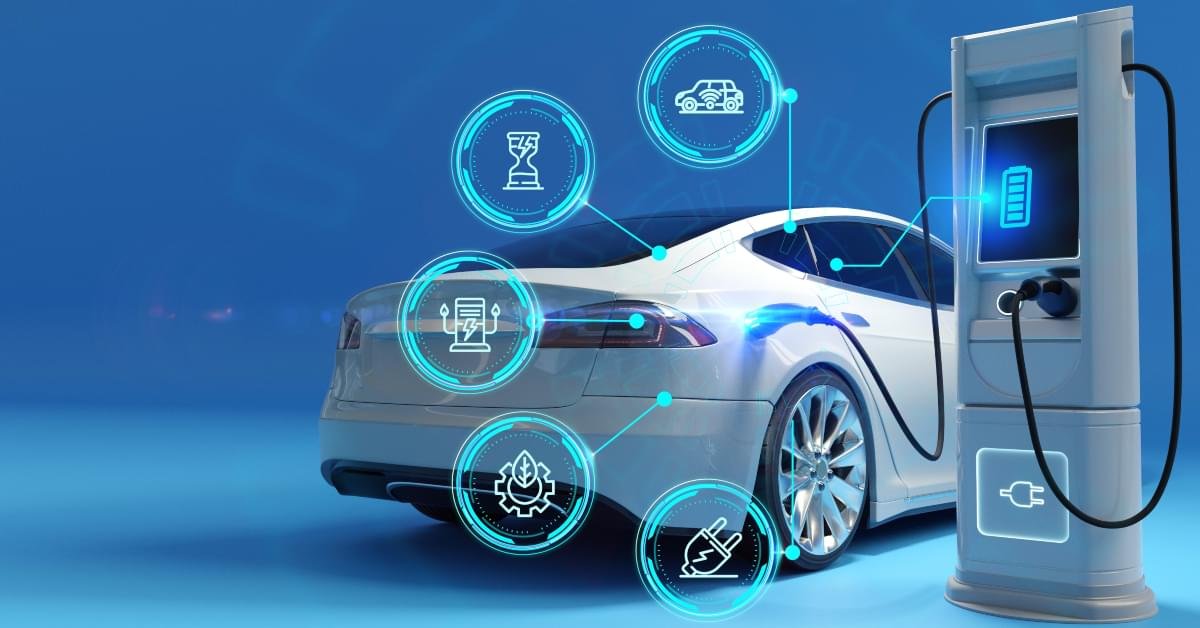Can Solar Panels Power the Future of Electric Cars?
Introduction
Electric vehicles (EVs) are becoming more popular every year. They help reduce pollution, save fuel costs, and support the move toward a greener planet. But one big question remains: how will we charge all these electric cars in a way that is truly clean and sustainable?
Most EVs are still powered by electricity that comes from the grid. In many places, that electricity is still made by burning fossil fuels. This means electric cars are not always as clean as they could be. That’s where solar panels come in. They offer a clean, renewable source of energy that could help power EVs in a better way.
In this article, we’ll explore how solar energy works, the benefits and challenges of using it to charge electric cars, and what the future might look like if solar becomes a key part of sustainable transportation.
How Electric Cars Are Charged Today

Charging Through the Grid
Right now, most electric vehicles are charged using power from the electric grid. This includes home chargers, public fast-charging stations, and workplace chargers. While this system works well, the energy often comes from power plants that use coal, gas, or oil. These fossil fuels release carbon dioxide into the air, which contributes to climate change.
Increasing Demand for Electricity
As more people buy electric cars, the demand for electricity is growing fast. This puts pressure on the power grid, especially during peak hours. It also means we need to find cleaner ways to generate more electricity without harming the environment.
Renewable Energy Is the Goal
Many governments and companies are working to add more renewable energy sources, like wind and solar, to the grid. But this process is slow and costly. That’s why charging EVs directly from solar panels could be a faster, cleaner option.
What Are Solar Panels and How Do They Work?
Understanding Solar Panels
Solar panels are devices that turn sunlight into electricity. They are made of materials like silicon, which capture the sun’s energy and convert it into electric power through a process called the photovoltaic effect.
Types of Solar Systems
There are different ways to set up solar panels. Some people put them on the roof of their home. Others use solar farms, which are large areas filled with solar panels. There are also solar carports—these are like covered parking spots that have panels on top. All of these setups can produce energy that could be used to charge electric cars.
Storing Solar Energy
Solar panels produce power during the day when the sun is shining. To use that energy at night or on cloudy days, it needs to be stored in batteries. This makes solar-powered charging more reliable, even when the weather changes.
Benefits of Charging Electric Cars with Solar Panels

Clean and Renewable Energy
The biggest benefit of solar energy is that it’s clean. It doesn’t produce air pollution or greenhouse gases. This means charging your car with solar power is much better for the environment compared to using electricity from fossil fuels.
Lower Charging Costs
After the initial cost of installing solar panels, the electricity they produce is free. This can lower your overall car charging costs, especially over the long term. In some cases, people can even earn money by selling extra energy back to the grid.
Energy Independence
With solar panels, you can create your own electricity. This means you don’t have to rely as much on the power grid or rising electricity prices. It also gives you more control over your energy use.
Helps the Power Grid
If more people use solar panels to charge their electric cars, it can reduce the stress on the power grid. This is especially helpful during peak hours when lots of people are using electricity at the same time.
Great for Remote Locations
Solar panels can work well in places that are far from power lines or charging stations. This makes them useful in rural or off-grid areas where other charging options are limited.
Challenges of Using Solar Panels for EV Charging
Weather and Sunlight
Solar panels need sunlight to produce power. This means they work best in sunny areas. In places with lots of clouds or long winters, they may not make enough electricity to fully charge a car every day.
High Setup Costs
Installing solar panels and the systems needed for EV charging can be expensive. You may also need battery storage, which adds to the cost. However, prices are coming down, and government incentives can help.
Space Requirements
Solar panels take up space. To generate enough power to charge an electric car, you may need a large roof or a dedicated area for the panels. This can be a problem in small homes or crowded cities.
Energy Storage
Because the sun doesn’t shine at night, solar energy must be stored in batteries for later use. These batteries can be costly and need regular maintenance. Without good storage, solar charging may not always be reliable.
Real-World Examples and Innovations
Solar-Powered Vehicles
Some companies are building cars with solar panels built right into the body. Examples include the Lightyear One, Aptera, and Sono Sion. These vehicles can charge themselves using sunlight, although only for short distances. They still need regular charging for longer trips.
Solar Carports and Charging Stations
Solar carports are becoming more common at homes, offices, and public places. These carports have solar panels on the roof and charging equipment below. They offer shade for the car and clean energy at the same time.
There are also public charging stations powered by solar energy. Some cities are testing solar-powered EV stations that work without being connected to the grid. These stations are especially useful during blackouts or in remote areas.
Solar at Home
Many EV owners are installing solar panels on their homes. This allows them to charge their cars directly from the sun. Some systems even combine solar panels with smart chargers and energy storage, creating a complete green energy solution.
What the Future Might Look Like
Smarter Solar Technology
New solar panels are becoming more efficient and cheaper. In the future, even smaller or weaker sunlight could produce enough power to charge a car. Thin, flexible panels may even be built into car roofs or windows.
Integration with Smart Grids
Electric cars, solar panels, and home batteries could all be connected in smart energy systems. These systems will balance energy use, store extra power, and sell it back to the grid when needed. This makes the entire system more efficient and cost-effective.
Widespread Adoption
If solar charging becomes easier and cheaper, more people and businesses will adopt it. This could lead to cleaner cities, less reliance on oil, and a stronger push toward electric transportation.
Conclusion
Electric cars are a big step forward for cleaner transportation. But to be truly sustainable, they need to be charged with clean energy. Solar panels offer a powerful solution. They provide renewable energy, reduce carbon emissions, and help lower long-term costs.
There are still challenges, like high setup costs and the need for battery storage. But technology is improving fast. As solar power becomes more common and efficient, it could become a key part of the future of electric vehicle charging.
Solar panels might not be the only answer, but they are a big part of the journey toward a cleaner, more sustainable future.

